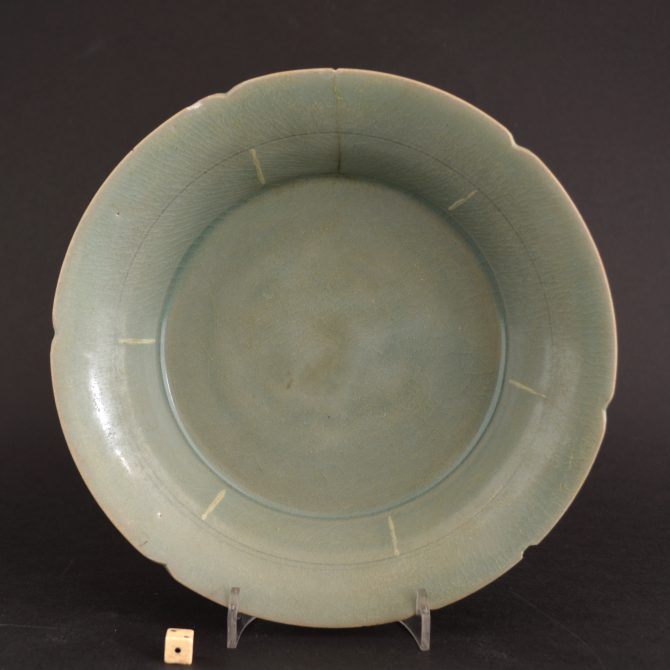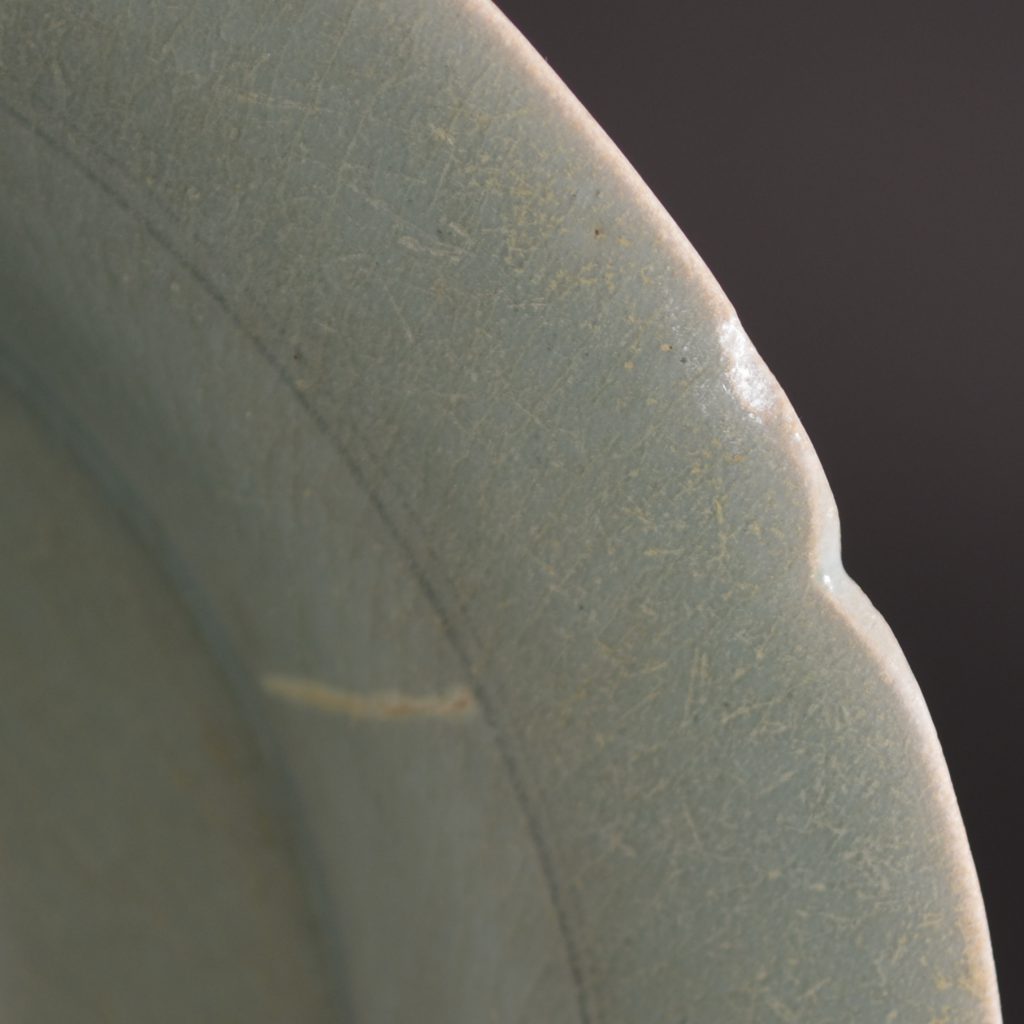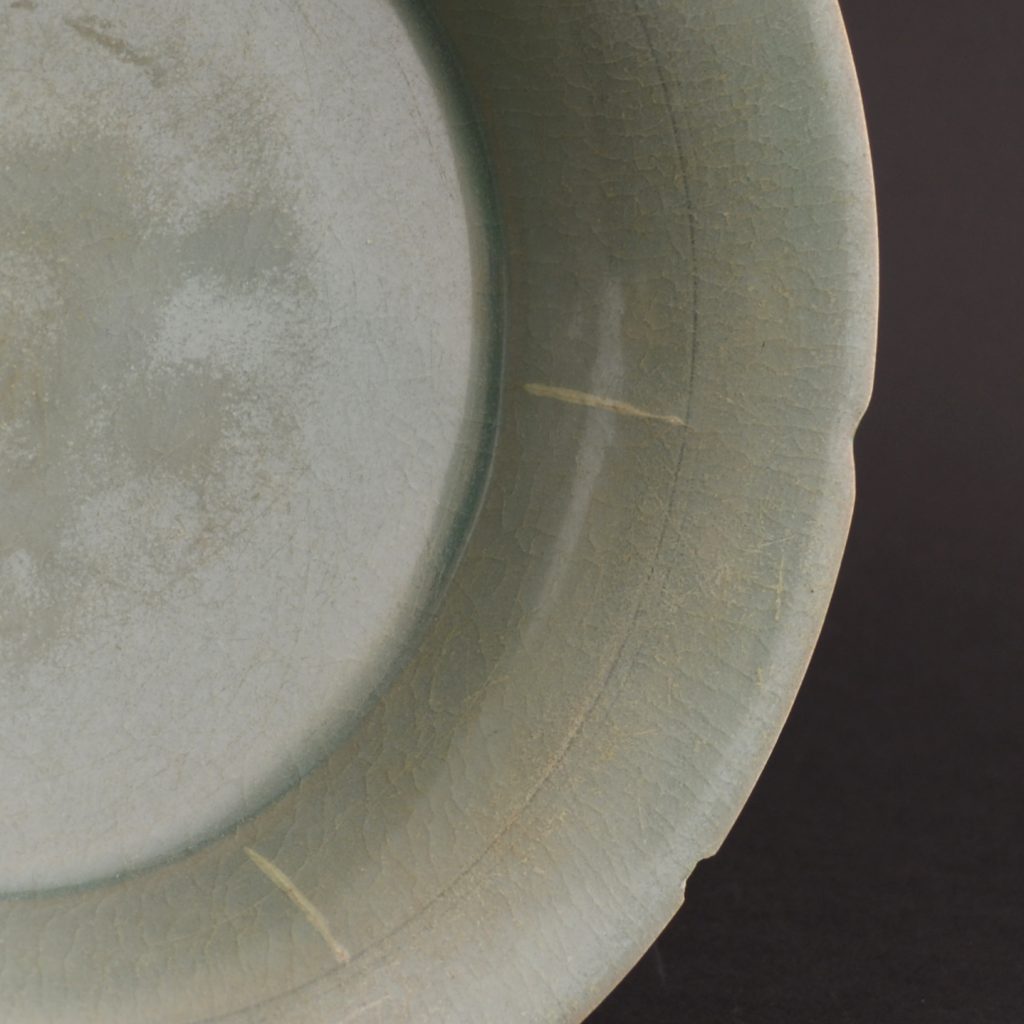
A Fine Korean Celadon Dish, Koryo Period 918 – 1392.
A fine Korean Celadon dish, Koryo Period (918 – 1392) 12th century. The simple flower shaped form with small relief bars and incised circular lines.
SOLD
- Condition
- In poor condition ; a thick dark crack to the rim c.47 mm. A large flat flake type chip to the back c.13 x 12 mm (this include the part of the chip that is just glaze loss). Wear to the well and general wear.
- Size
- Diameter : 18.5 cm (7 1/4 inches)
- Provenance
- R and G McPherson Antiques. The Guy-Jones Collection number 1132.
- Stock number
- 24070
Information
Koryo Ceramics :
Korean ceramics of the Koryo Period (918 - 1392) chiefly comprise of Celadon wares, although influenced by Chinese Song Dynasty (960-1279) Yue Celadons they are distinctly Korean, although there is a geological connection between the Yue and Korean celadon kilns which might add to the similarity in appearance between the two. The distinct colours achieved by Korean potters owe much to the raw materials employed. The presence of iron and iron oxide as well as manganese oxide in the clay, and quartz particles in the glaze give these celadons their unique appearance. Firing temperatures were commonly around 1150ºC, and the level of oxygen within the kiln was dramatically reduced at some stage of the firing; this is known as a reducing, rather than an oxidizing atmosphere. Koryo celadon are often plain, but decoration included incised, carved, impressed, or inlaid designs. The inlaid designs are distinctly Korean, metallic compounds like iron oxide (black or brown), copper oxide (red), and even occasionally gold colourings were added to slip which them was rubbed into an impressed design producing the look of an inlay.


